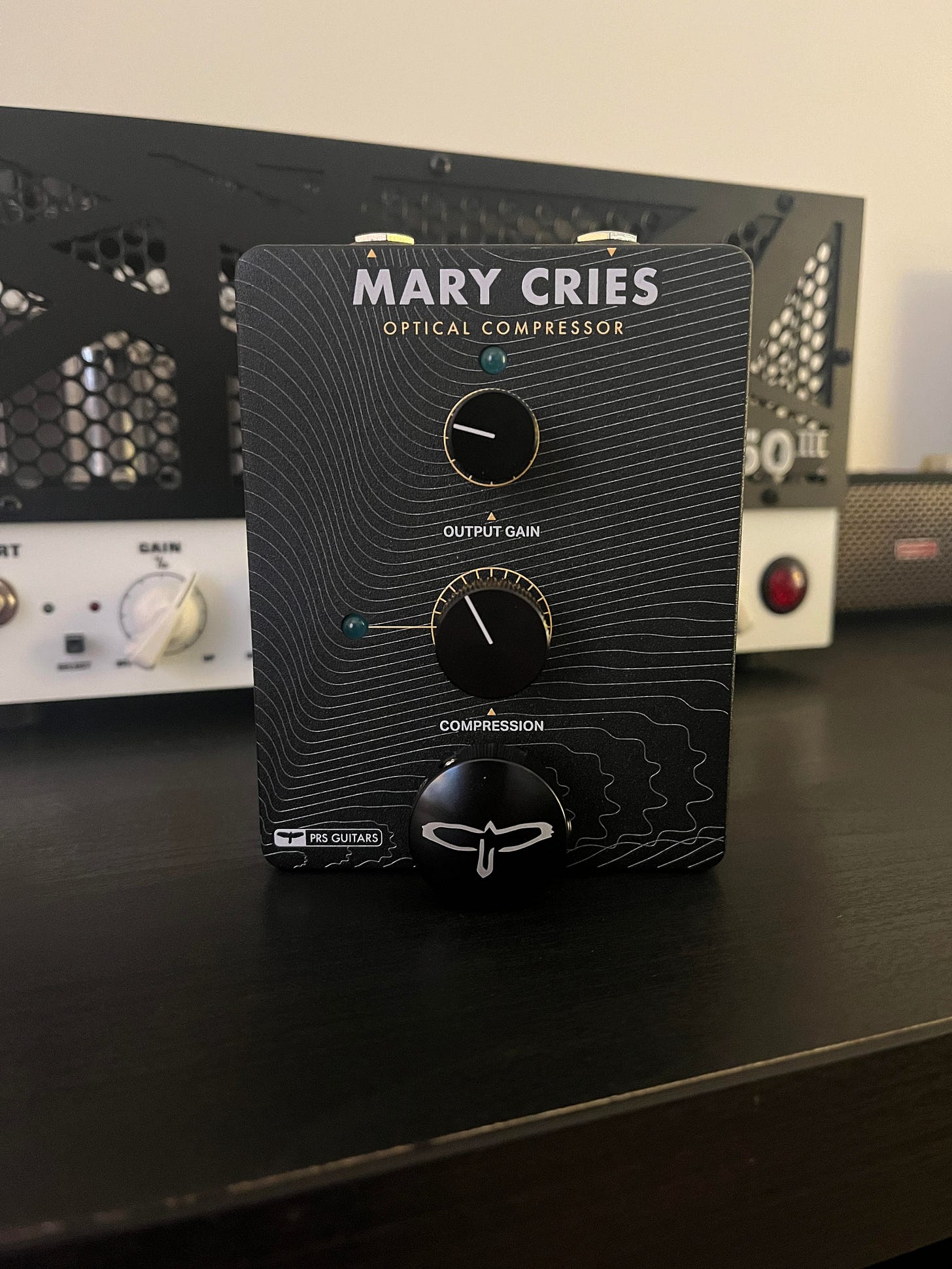I held off on reviewing the oddly named Mary Cries compressor for several months. I've been using it regularly since September, after trying out the PRS pedal line during a visit to their factory. My hesitation stemmed partly from the worry that I'd be perceived as a PRS fanboy, predisposed to liking anything with their logo.
And, let's be honest, there's some truth to that. I'm a fan of about 95% of what they produce.
However, it's been a while since I've discussed a pedal on "the stack," and since I'm currently working on a larger project, I figured now was the right time to fill some space and talk about this pedal.
So, without further ado, let's dive into the Mary Cries Compressor by Paul Reed Smith Guitars.
PRS released a trio of pedals in 2022: a compressor, an overdrive, and a flanger. While they haven't exactly set the world on fire, I wouldn't be surprised if they were discontinued. As my fascination with modulation effects grows, I'm interested in picking up the other two, especially the flanger.
Beyond the quirky name (which I'm also guilty of commenting on), two things immediately stand out. First, the enclosures are large, reminiscent of the old Truetone Visual Sound pedals from the early to mid-2000s. Second, the build quality is impressive. These are solid, heavy pedals with robust input jacks and a switch that feels like it can withstand years of stomping. From a business perspective, im sure these are fairly expensive to manufacture.
Now, let's talk about the sound. This is a genuinely useful pedal. Although marketed as a compressor, I've found using the output gain knob as a boost function to be my favorite. It's not a completely clean boost; it adds a touch of light overdrive. I've been using it to push the front end of my EVH 5150 III with a hint of compression, and the results are fantastic.
As an optical compressor, the Mary Cries can add anything from a subtle sheen to your tone to a smooth, harmonically rich boost. Of course, you can do that spanky country thing too! It's one of those pedals where you don't necessarily notice it working, unlike something more aggressive like an MXR Dyna Comp. But when you turn it off, its absence is felt—and not in a good way.
I understand the Mary Cries is based on the Universal Audio 1176 compressor, a legendary piece of studio gear. While I haven't personally tried a real 1176 rack unit or the newer UA compact pedal, I'm not particularly inclined to stray from the Mary Cries. I spent a considerable amount of time searching for a compressor pedal I truly enjoyed (okay, maybe "considerable" means I tried three long-term).
One potential downside is its size. It's not exactly pedalboard-friendly. If space is a major concern, I'd probably opt for the classic Keeley Four Knob Compressor. Currently, my Mary Cries doesn't even have velcro on the back, but I do plan to experiment with it beyond just guitar use.
So, do I like this pedal, or was I simply swayed by my PRS factory experience? I'd say it's a bit of both. Visiting the PRS factory, meeting Paul Reed Smith, and getting more than a few minutes to talk to him was a memorable experience. But, putting that aside, is this a good piece of gear? Absolutely. If you're looking for a simple, great-sounding compressor, the Mary Cries delivers. If you crave endless tweaking options, this might not be for you, as it only has two knobs (Output gain and compression). However, those two knobs are very effective. It's a "set it and forget it" pedal for me, which is exactly what I want.
I'm still curious to try a real UA 1176 rack unit or the Warm Audio recreation someday. I'm also intrigued by the classic DBX 160A, purely because I have a soft spot for '80s studio rack gear.




